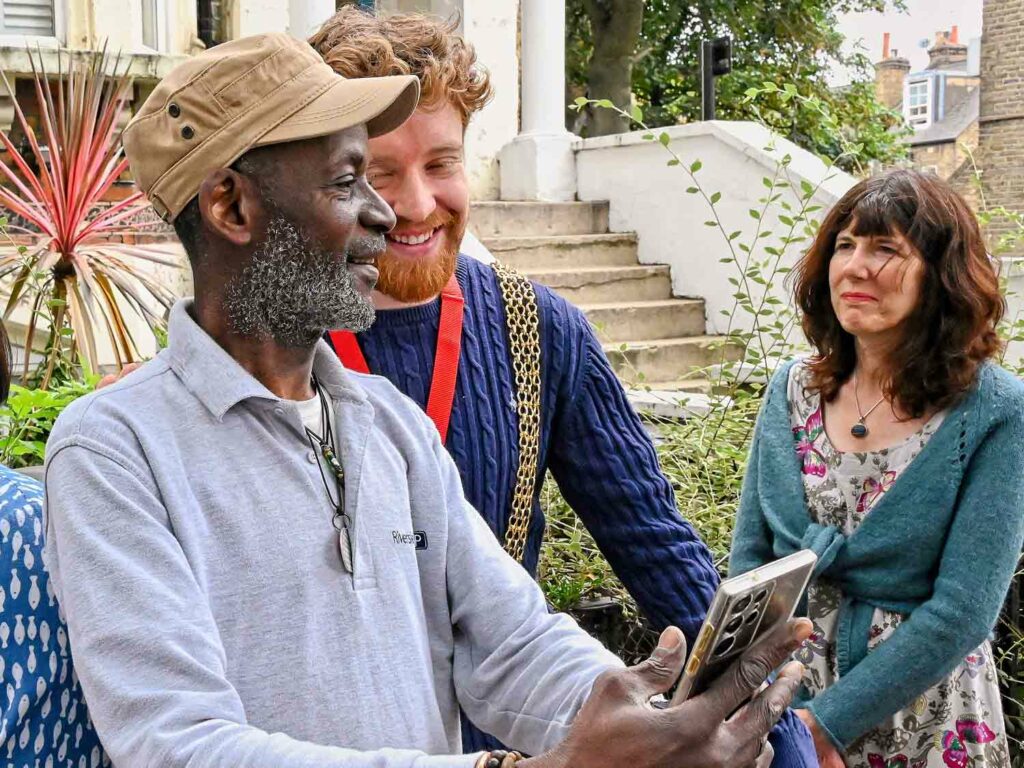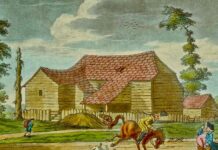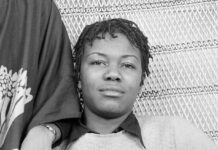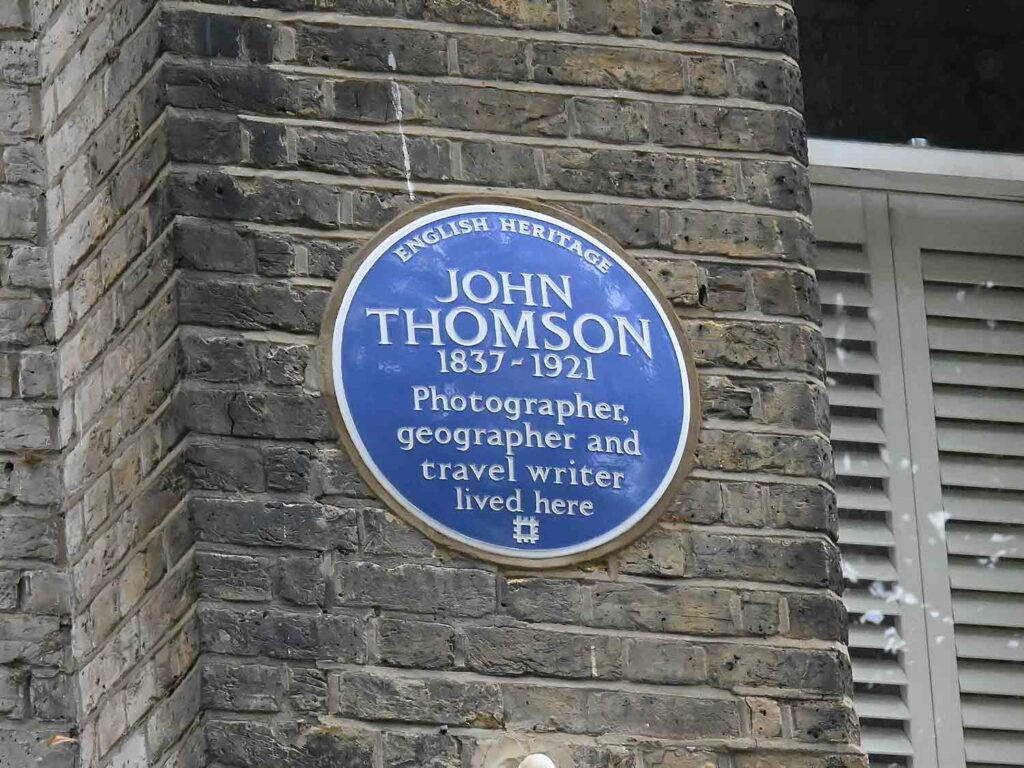
Brixton acquired a new blue plaque on Effra Road yesterday (8 August). It marks the home of a pioneering photographer and traveller who, in his time, worked with revolutionary Marxists and for the British royal family.
John Thomson lived at 15 Effra Road, opposite St Matthew’s Church. In his day, the address was 12 Elgin Gardens. He was born in Edinburgh in 1837 and died in 1921; he is buried in Streatham cemetery.
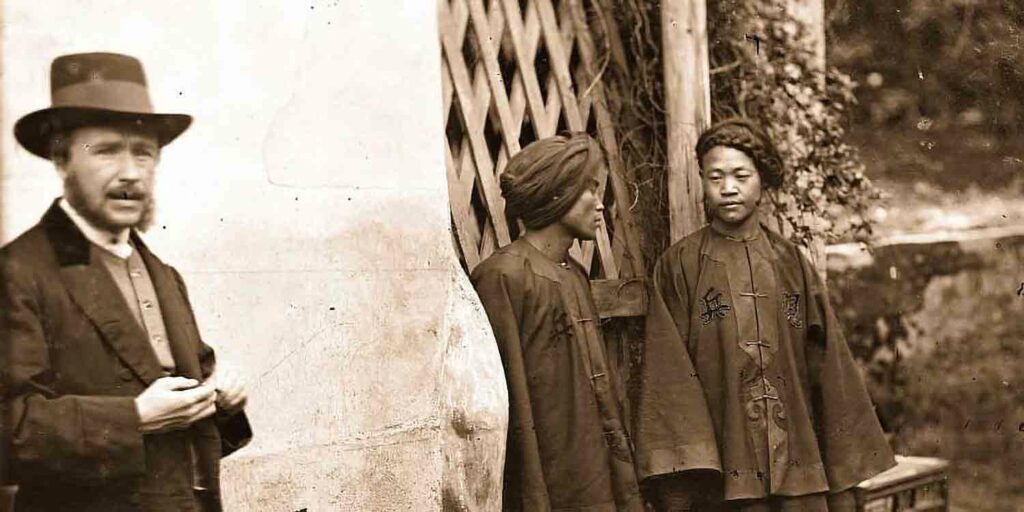
Once settled in South London, Thompson had three homes in Brixton, the last in Acre Lane just around the corner from the Effra Road plaque. He then moved to Streatham after a brief interlude in Tulse Hill. He lived in Lambeth over a period of nearly 50 years, said Rebecca Preston, London blue plaques historian with English Heritage. Founded more than 150 years ago and now run by English Heritage, the blue plaque scheme is believed to be the oldest in the world.
She was opening the unveiling ceremony for the plaque – number 1,012 in Greater London.
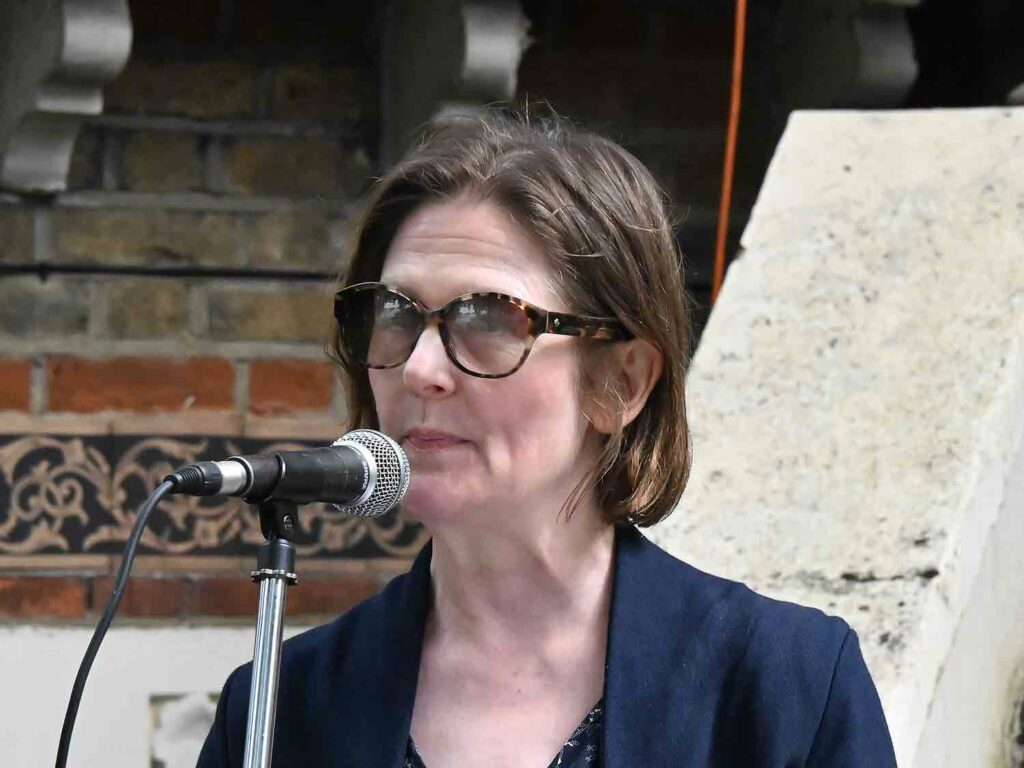
“The association between the person and where we place a plaque is important to us,” Preston said.
“After his early career exploring Asia with his notebook and camera, it was in Brixton that John Thompson chose to settle with his wife, Isabel, and two young sons, William and John, when he returned to Britain permanently and from where he continued to promote geographical photography.”
The large terraced house on today’s Effra Road provided a home for the Thompsons’ growing family. Margaret and Arthur were baptised across the road in Saint Matthew’s in 1876 and 1879. His father died there in 1879.
While living in Brixton, Thomson produced Street Life in London, – a study of destitution in London – mainly the East End – and one of the first books to use photographs to illustrate assertions in the text.
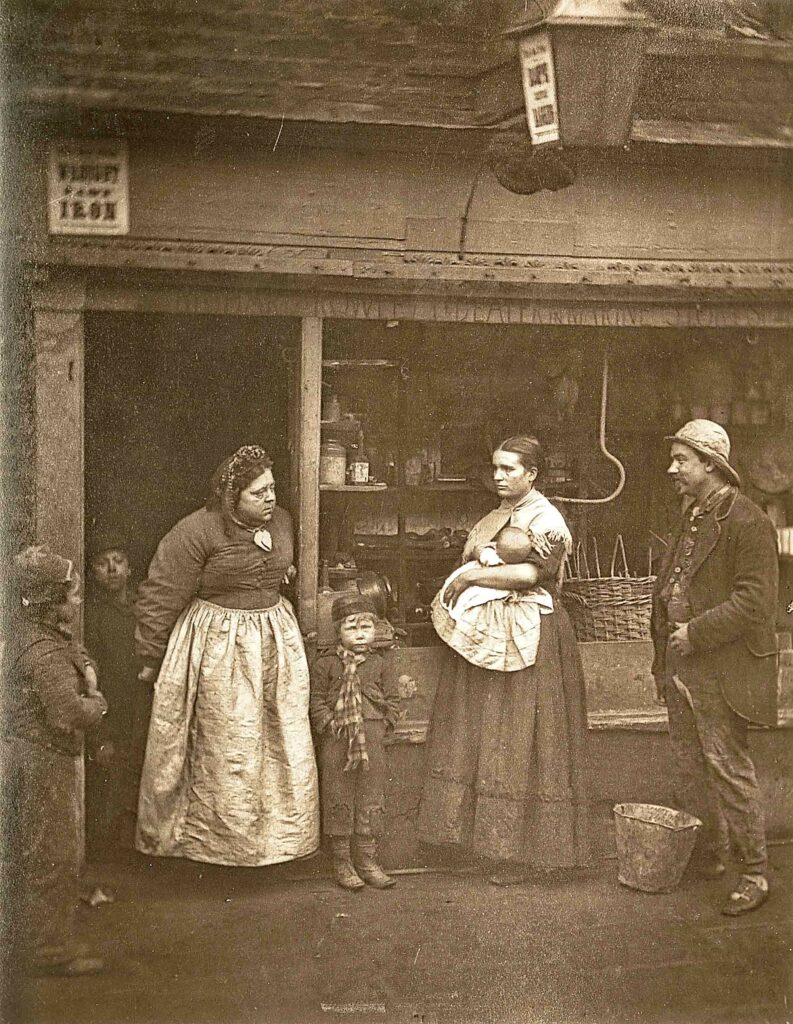
Released in 12 monthly instalments beginning in February 1877, Street Life in London was one of the first published collections of social documentary photographs.
It consists of 36 photographs by Thomson, each accompanied by a brief essay by Adolphe Smith – a left-wing writer and activist who was a member of the First Communist International.
The photographs have been digitised by the London School of Economics.
Smith joined the Paris Commune in 1871 and narrowly escaped execution when it was violently suppressed by the French army.
One of the earliest travel photographers in Asia, in the 1860s and early 1870s, Thomson travelled across China, Cambodia, Thailand and Malaysia.
On his return to London in 1872 he ran a successful portrait studio, gaining the royal warrant in 1881. He was a member of the Royal Photographic Society from 1879. He was also the Royal Geographical Society’s official instructor in photography.
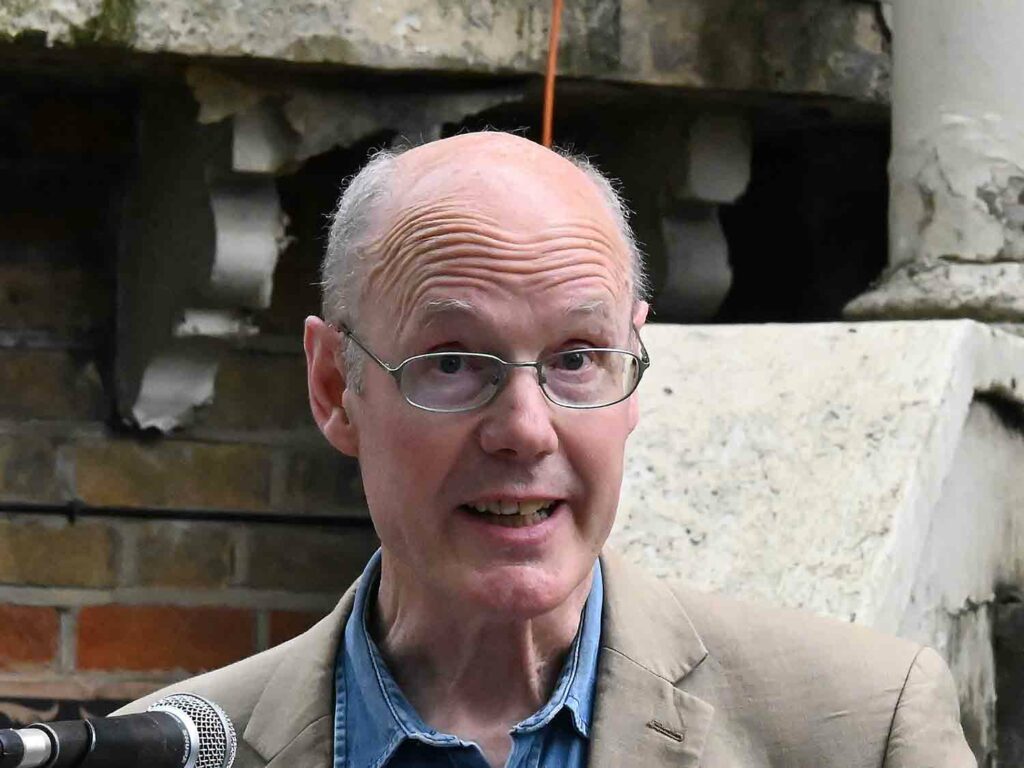
Thomson was nominated for a plaque by Jamie Carstairs, senior digitisation officer with Bristol University’s library services.
He told the unveiling ceremony that Thompson was an exceptionally gifted and versatile photographer with “a rare combination of a keen intellectual curiosity, perceptive observational skills, and visual virtuosity”.
The photographic technology of his day required exposure times of several seconds, during which people had to stay still. Thompson was unusually skilful at posing individuals and groups in varied and realistic-looking arrangements.
Carstairs said Thompson’s legacy and his significance to the history of photography rested on Street Life in London and a second book, Illustrations of China and its People, consisting of 200 photographs and descriptions, published in 1874. It earned him the nickname “China Thomson”. He is nowadays acclaimed as one of the best foreign photographers ever to set foot in China, said Carstairs.
“Thomson’s photography introduced the Victorian public to what it could not see – far away Asia – and to what it did not necessarily want to see – London’s poorest people,” said Carstairs.
“John Thomson is a model photographer. Talented, hardworking, innovative, effective, generous, humane.
“His respect and empathy for the people he photographed made for compassionate and moving portraiture, especially of women.
“His people and language skills, charm, and affability encourage rapport and help build trust and collaborations.”
Carstairs thanked the many people and organisations involved in placing the plaque, saying: “We hope it will be an inspiration to photographers everywhere, including here in Brixton”.
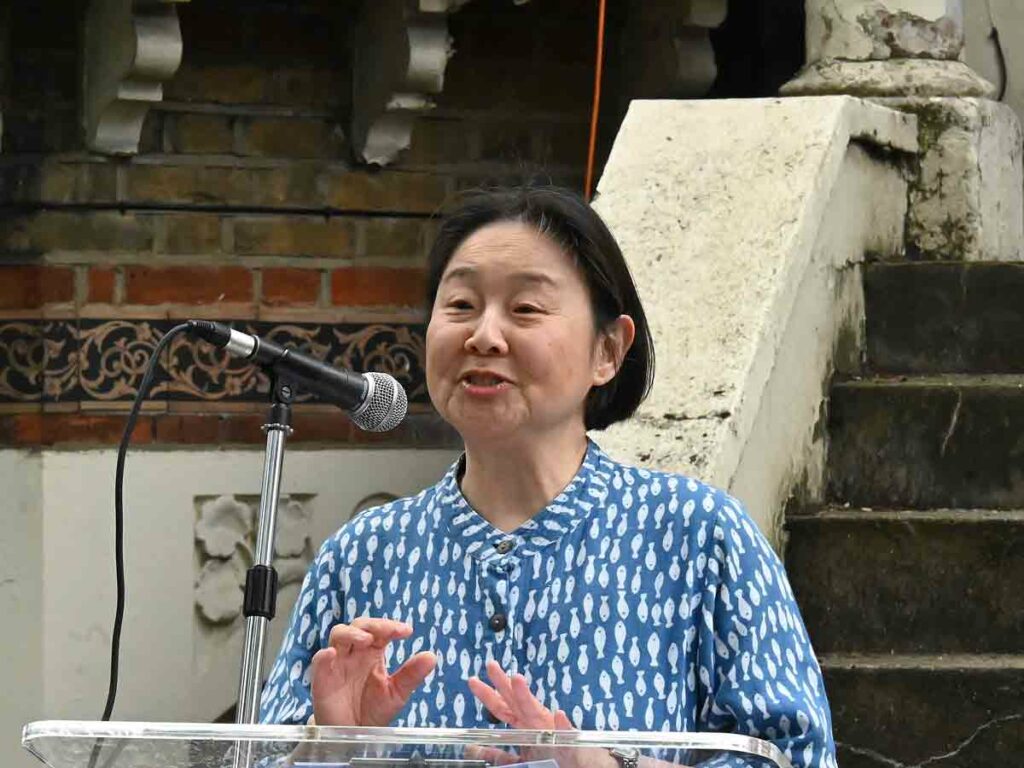
One of those people is Betty Yao, MBE, curator of the touring exhibition, Through the Lens of John Thomson. She also chaired the John Thomson Commemoration Group, which completed the restoration of his gravestone at Streatham cemetery in 2019.
Fifteen years ago, she said, she was introduced to Thomson’s photographs.
“Instantly, I fell in love with his images of China, especially the many, many photographs of women.”
This led her to make a “naïve” offer to mount an exhibition in Beijing. She took a six-month leave of absence from her job “as I thought ‘we’ll just do one show’.”
But, she said: “Guess what? We have now had 30 exhibitions across three continents, and it’s been seen by over a million visitors. So I actually never went back to work.”
Thompson’s Asia photography included time in Bangkok where he photographed the king, temples and monks, and musicians and dancers and panoramic river scenes.
“He was actually a very young photographer then,” said Yao, “only in his late twenties. But we could already see he was experimenting with new ideas of more relaxed portraiture and practising to frame his landscapes beautifully, like paintings.”
In the jungles of Cambodia he nearly died of malaria, but also became the first person to photograph the temples of Angkor Wat.
He spent five years based in Hong Kong while photographing mainland China.
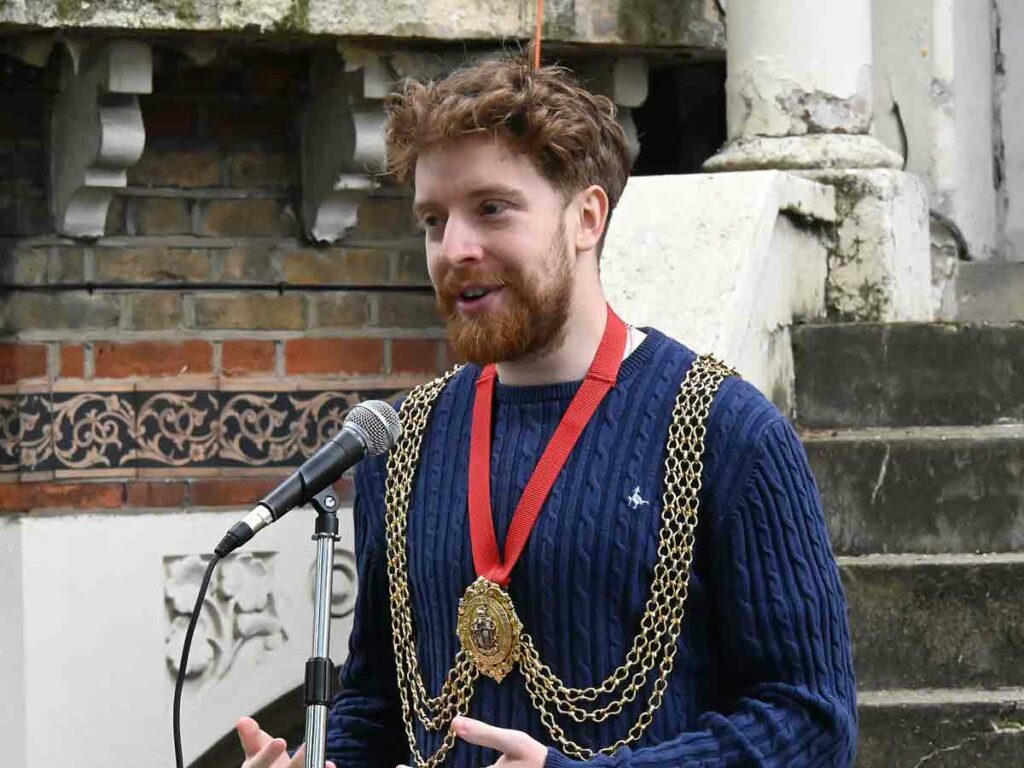
Introducing John-Paul Ennis, the mayor of Lambeth and a councillor for the Brixton North ward, Rebecca Preston said Thomson had served as an elected “vestryman” – an early councillor for Brixton before Lambeth became a metropolitan borough.
Ennis said he was born and raised in Lambeth and comes from a long line of Lambeth residents, “so I’ve always been fascinated by Lambeth’s history. So many of the people who have lived and worked in the borough have made huge contributions to the world around us.
“It’s important that we celebrate them. So I’d like to thank everybody involved in helping bring this blue plaque to fruition.
“Blue plaques create the opportunity to sow seeds in people’s minds. To see that great people have lived or worked in your community can have a huge impact on you.
“I’m sure that John Thompson’s plaque could be a huge inspiration to our young people and to tell them that, no matter where you live, and, yes, even if you live in Brixton, you can go on to achieve great things.”
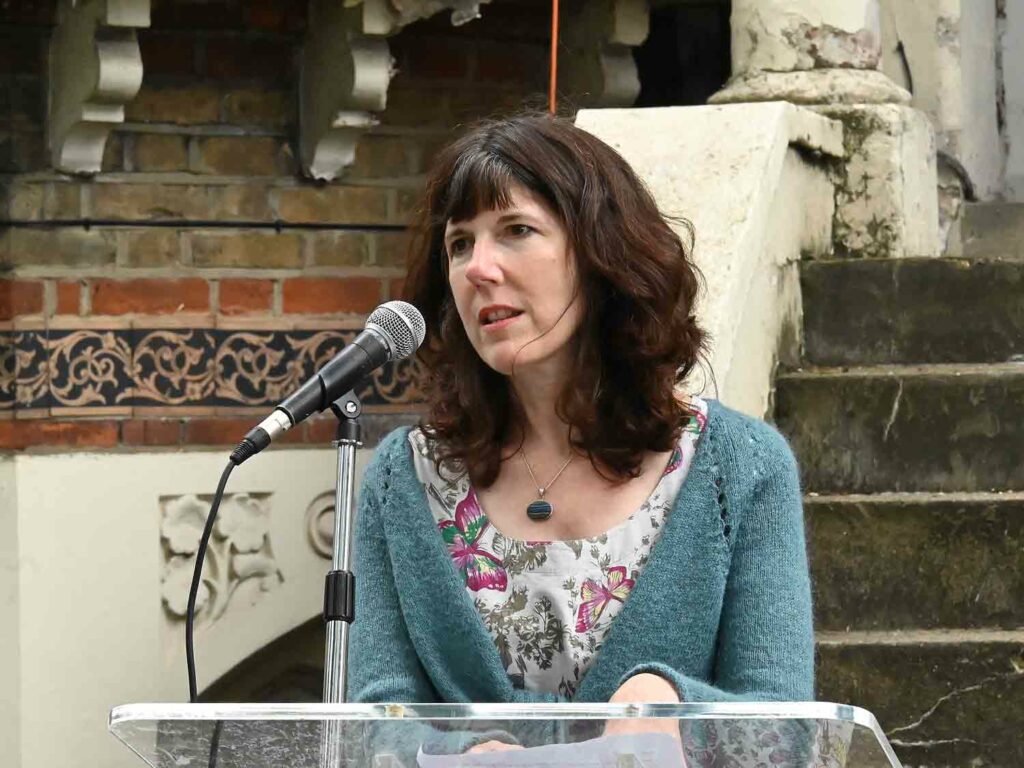
Caroline Thomas, whose mother Hilary was Thomson’s granddaughter, thanked all those responsible for the plaque.
She said that Street Life in London is the only original book of Thomson’s left in the family’s possession.
“As Londoners by upbringing, the work resonates greatly, despite being produced over a century ago.
“It’s sad to think that some of the themes still prevail today. We’re especially proud of the fact that Thomson and Smith chose as their subjects ordinary people and those on the edge of society.
“Street Life in London captures the struggles and resilience of the city’s poorest inhabitants. The photographs are not only a social commentary of Victorian existence, but infused with compassion and humanity. And it is this humanity that we would like to honour.”
After the ceremony, Brixton’s longstanding photographic community Photofusion hosted more talks and discussion.
